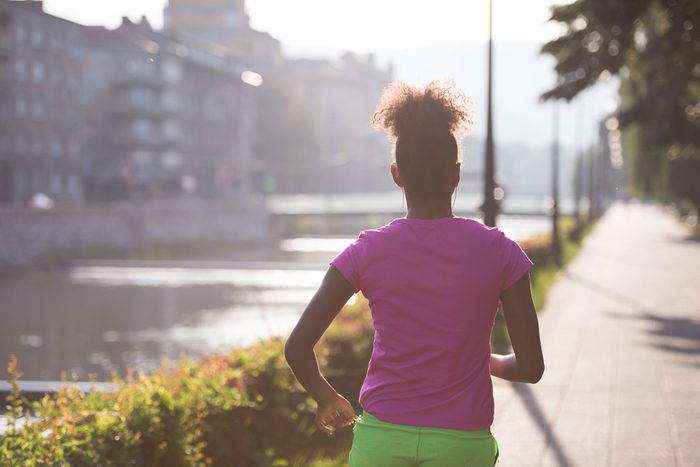
Summer running tip: do it early
Studies show a direct relation between higher temperatures and lower performance for elite runners. For a 5K or 10K run, temperatures above 17 degrees Celsius can begin to hinder performance in female runners.
In order to minimize the effects of hot summer days on your workout, schedule your run early in the morning or late in the afternoon when the temperatures aren’t as high.
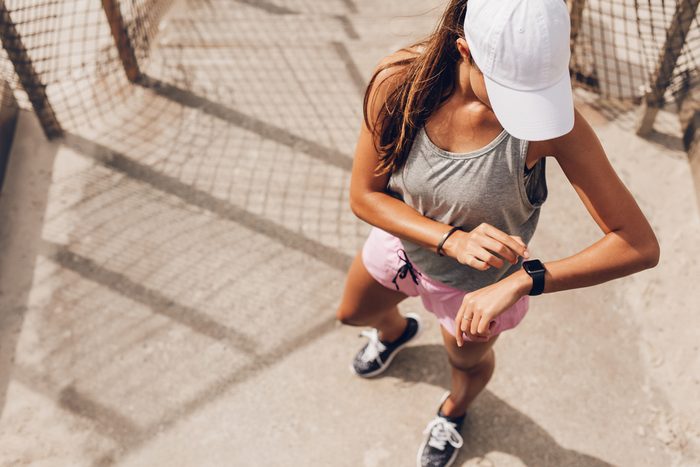
Wear the correct gear
Try clothing made from technical fabrics designed to perform in the heat. Choose lightweight pieces that have vents or mesh to allow for maximum breathability, fabrics that wick moisture in order to keep you dry, and itms that also have sun protection.
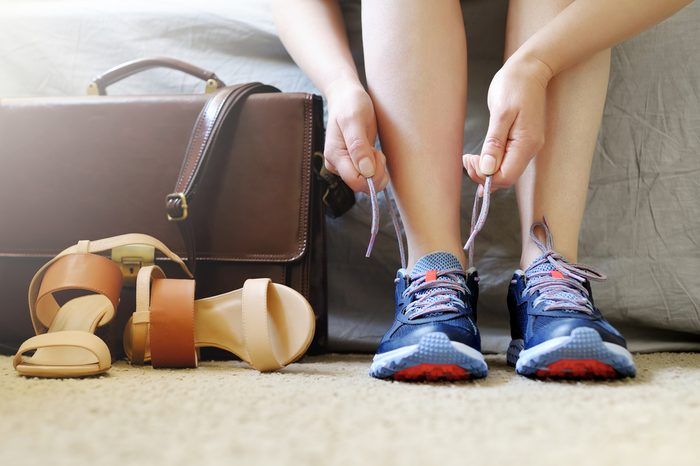
Don’t forget about your feet
It’s equally (if not more) important to wear socks that wick, cushion and keep you cool. Look for styles that feature padding around the ankle, in the heel and the ball of the foot, as well as some arch support, for added comfort. Toe socks are a great option to help prevent blisters from developing between your toes.
For an extra oomph, dab a bit of peppermint oil to the soles of your feet before putting your socks on. Not only will this help keep your feet cool, but the oil’s antibacterial properties can help fight bacteria from developing during your run.
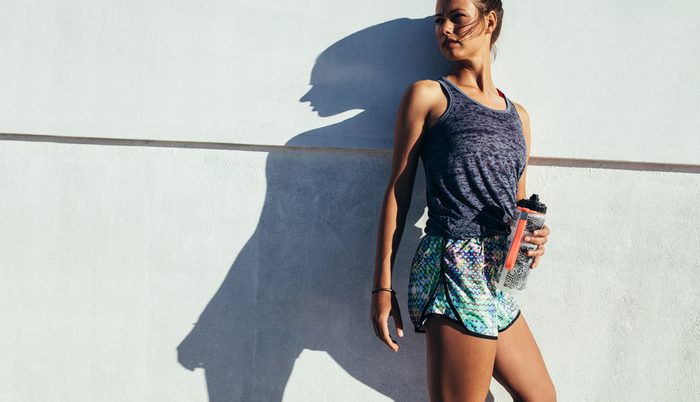
Kick hydration up a notch
It goes without saying that you need to pay extra attention to stay hydrated in hot weather. Although the amount of water you need varies depending on your body mass, the day’s temperature and the intensity of your workout, as a general guideline you should drink about half a litre of water before you start, and half a litre for every hour you run in order to maintain proper hydration.
Make sure to not drink too much water as over-hydration can dilute your body’s blood sodium levels causing hyponatremia. The best way to know how much water you need to be drinking is to follow your thirst as your body is built with an amazing water-balancing mechanism.
A study has shown that adding a few drops of peppermint oil can also boost your performance by improving your blood pressure, heart rate and breathing.
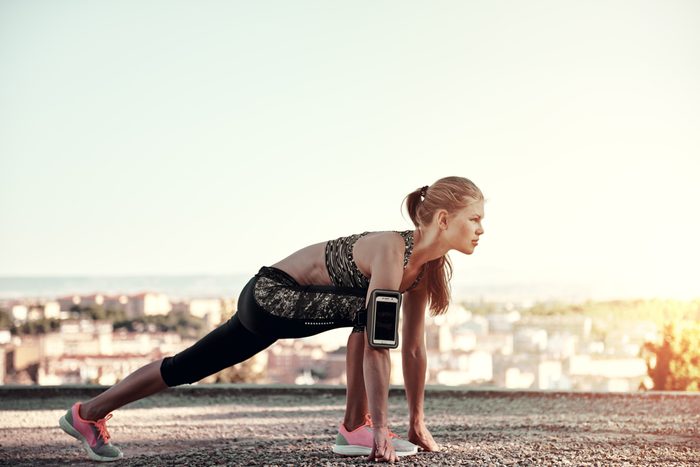
Slow it down
As temperatures rise, the heart works harder to deliver blood to your muscles while also attempting to regulate body temperature, which can result in a higher heart rate at the same running pace. You’ll notice your pace automatically slows down as the days get hotter. Don’t fight it. You can safely run the same distance in the summer if you do so at a slower pace. Pay close attention to how you feel and add more walk breaks as needed.
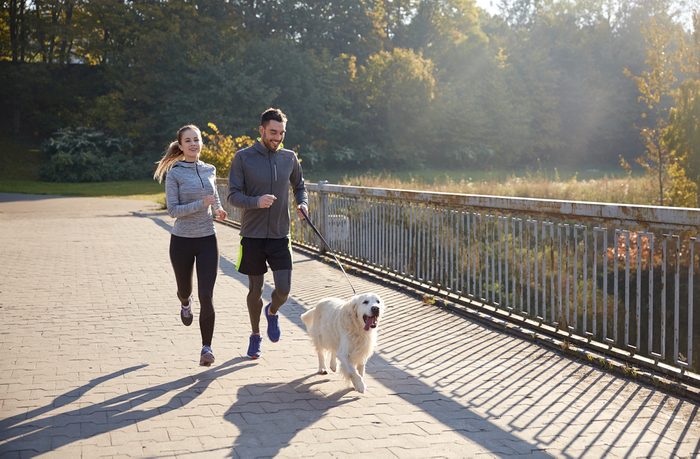
Mind the chafing
Chafing can be worse in the summertime as sweat creates added friction between skin-to-skin and skin-to-clothing rubbing. Prevent this by wearing shorts that cover your upper thighs and a bra with flat or covered seams. Be sure the bra you’re wearing isn’t too tight as it can dig into the skin and chafe. You’ll also want to avoid clothing that’s too baggy since the added material can cause irritation. For other vulnerable areas, such as your underarms, apply sports lubricant or Vaseline.
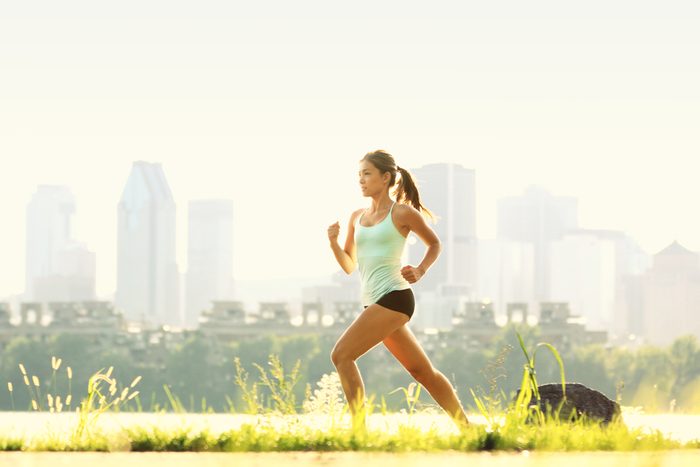
Change your route
Temperatures in the city centre tend to be higher as concrete and asphalt retain more heat. Areas in shade and close to water, on the other hand, are typically cooler and breezier. Try taking your workout inside or outside of the city close to a wooded area with lots of shade, a lake, a river or the coastline. Not only will your environment feel cooler, it’ll likely be more picturesque, too.
